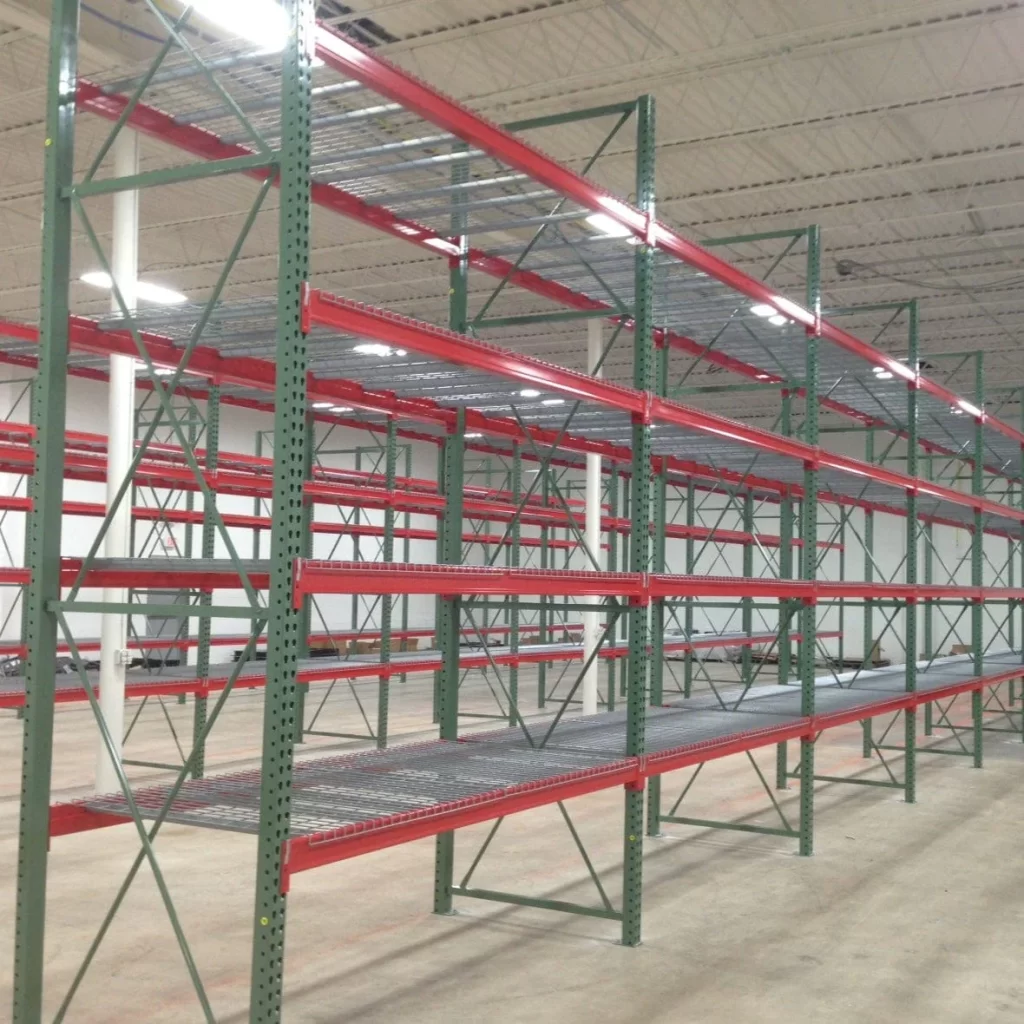Efficiency and space utilization are critical considerations in modern warehouse and storage facility management. To achieve optimal performance in these areas, a deep dive into pallet rack systems is necessary. Pallet rack systems, also known as pallet racking, are a fundamental component of warehouses and distribution centers, serving as the backbone for organized and efficient storage.
Types of Pallet Rack Systems – Pallet rack systems come in several configurations, each designed for specific storage needs. The most common types include selective pallet racking, drive-in racking, push-back racking, and pallet flow racking. Selective pallet racking, for instance, provides easy access to every pallet, making it ideal for facilities with a high product turnover. Drive-in racking, on the other hand, is suitable for bulk storage of the same product type, allowing for dense storage in limited space. The choice of racking system largely depends on the specific requirements of the facility.
Vertical Space Utilization – One of the most significant advantages of pallet rack systems is their ability to maximize vertical space utilization. These systems allow for the storage of pallets in multiple levels, taking advantage of high ceilings in warehouses. This not only saves floor space but also increases the overall storage capacity. The key is to ensure that the rack system is designed to match the height of the facility while considering the height of the stored items and the capabilities of the material handling equipment and go now.

Accessibility and Organization – Efficiency in a warehouse depends on how easily and quickly products can be accessed. Pallet rack systems offer excellent accessibility and organization when designed correctly. Selective racking, for instance, allows for easy picking of individual pallets, making it ideal for order fulfillment. Furthermore, proper labeling and tracking systems can be integrated into the racking to enhance organization and streamline inventory management.
FIFO and LIFO Considerations – In many industries, the order in which products are stored and retrieved is crucial. Pallet rack systems can be designed to accommodate both First-In, First-Out FIFO and Last-In, First-Out LIFO inventory management systems. Pallet flow racks are suitable for FIFO, as they ensure that the oldest stock is used first. The choice between FIFO and LIFO depends on the nature of the stored goods and the business’s operational requirements.
Safety and Load Capacity – Efficiency should never come at the expense of safety. Proper engineering and installation of pallet rack systems are essential to ensure load-bearing capacities are not exceeded, which could lead to accidents and damage to goods. Regular inspections and maintenance are crucial for upholding safety standards. Moreover, it is essential to consider seismic factors, especially in regions prone to earthquakes, to guarantee that the pallet racking can withstand natural disasters.
Automation and Technology Integration – As technology continues to advance, the integration of automation and smart systems into pallet rack designs is becoming more common. Automated storage and retrieval systems AS/RS can improve efficiency by reducing the need for manual labor in moving and retrieving goods. Additionally, data analytics and warehouse management software can be integrated into the system to monitor and optimize storage patterns and workflow, further maximizing space utilization and efficiency.
